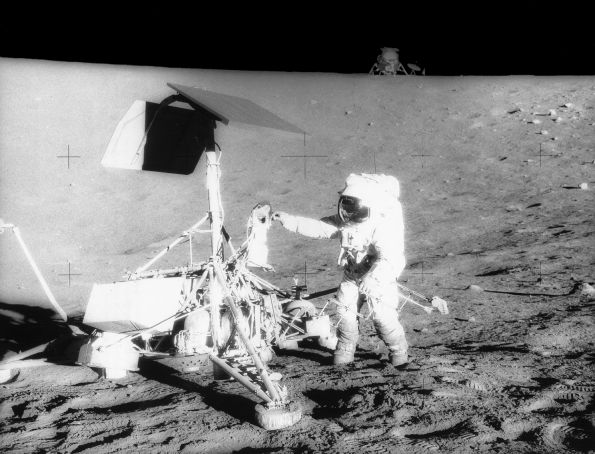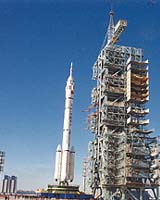Forty-five years ago today — April 17, 1967 — an Atlas-Centaur rocket launched from Cape Canaveral, sending Surveyor-3 on its way to the Moon.

(Apollo-12 mission commander Pete Conrad retrieves parts from Surveyor-3. The lunar module “Intrepid” is visible in the distance. NASA image taken by lunar module pilot Alan Bean. A higher-resolution version is available here)
Surveyor-3 landed on the Moon on April 19th, the second of the Surveyor series to make a soft landing. Its other objectives were to transmit television images of the lunar surface, use its sampler to probe the surface materials, and test the surface’s load-bearing strength and other properties in advance of the Apollo missions.
In what I think of as a fulfillment of Surveyor-3’s destiny, two and a half years later — on November 19, 1969 — Apollo-12 landed within about 600 feet (180 meters) of Surveyor-3. As shown in the image above, astronauts Pete Conrad and Alan Bean visited the spacecraft and examined it closely. They retrieved several parts, including the television camera, and returned them to Earth for analysis. Surveyor-3’s camera was put on display in the National Air and Space Museum.

















